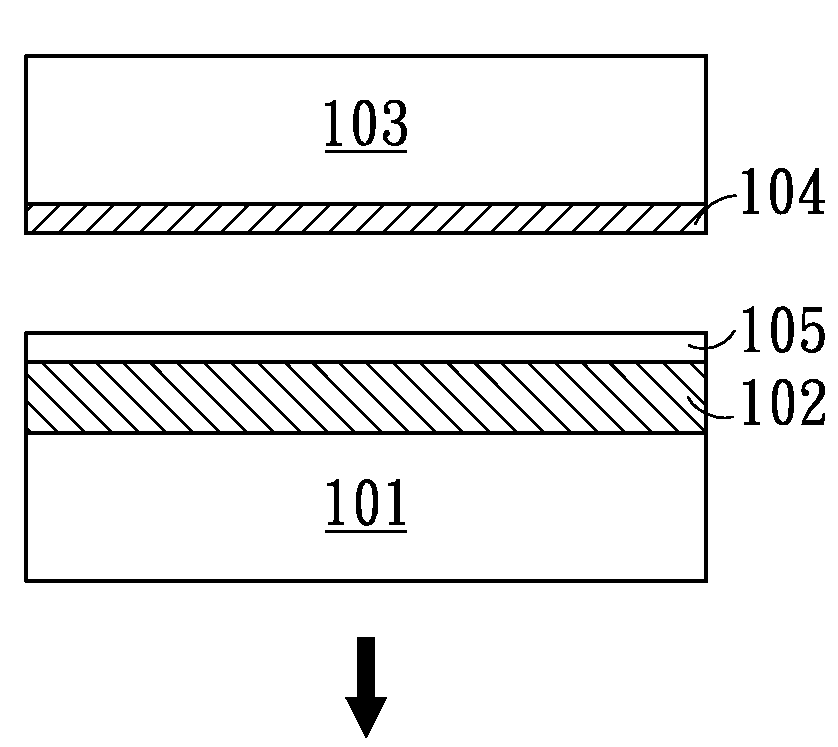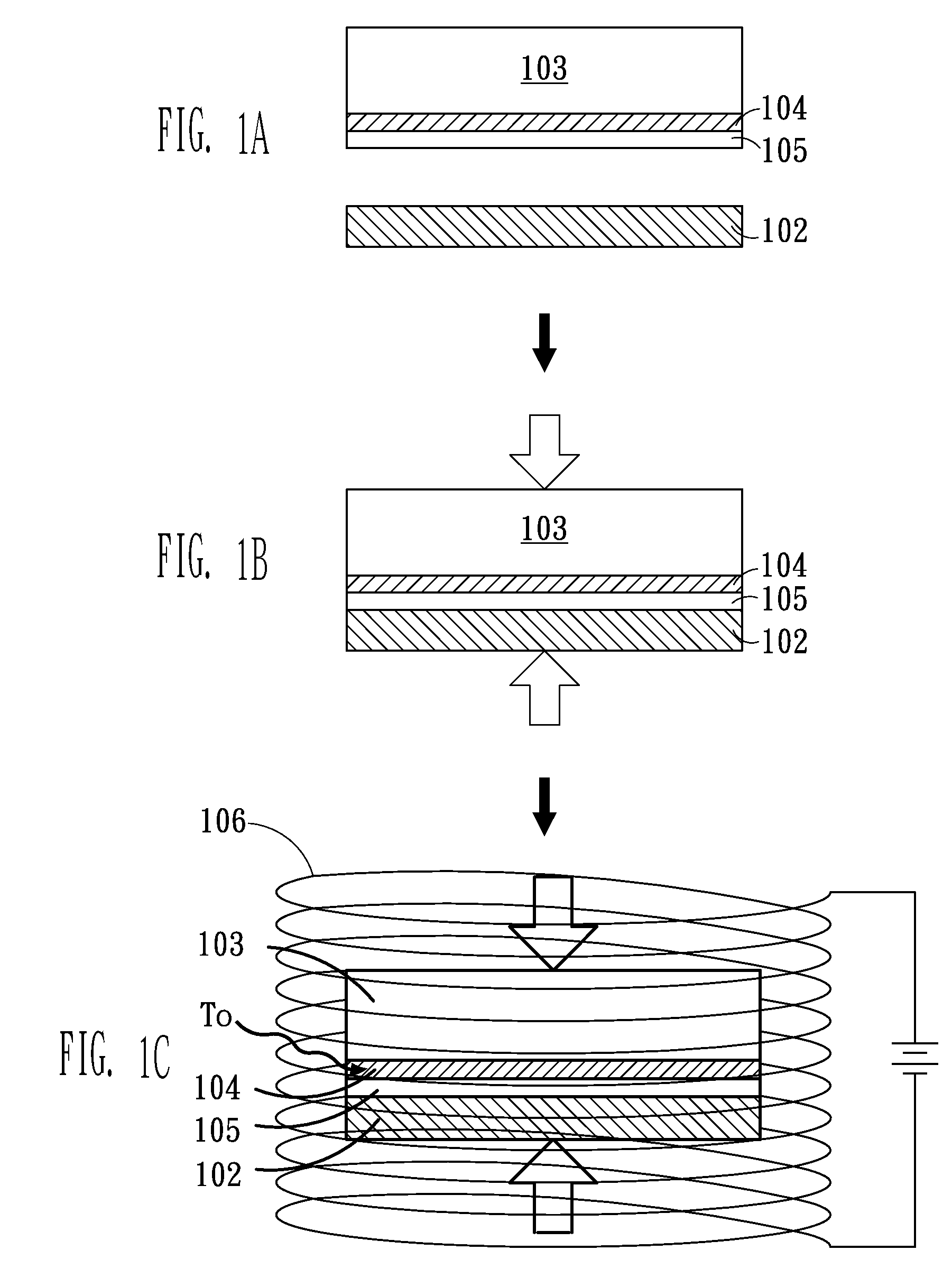Method for bonding two materials
a technology of bonding and materials, applied in metal working devices, manufacturing tools, semiconductor devices, etc., can solve the problems of incomplete bonding between the epitaxial layer and the conductive material, poor electrical and thermal conductivity, adverse influence on the quality of light-emitting diodes, etc., to avoid stress, improve manufacturing yield, and damage to materials
- Summary
- Abstract
- Description
- Claims
- Application Information
AI Technical Summary
Benefits of technology
Problems solved by technology
Method used
Image
Examples
Embodiment Construction
[0020]The present invention exemplarily demonstrates embodiments of a method for bonding two different semiconductor materials. In order to thoroughly understand the present invention, detailed descriptions of method steps and components are provided below. It should be noted that the implementations of the present invention are not limited to the specific details that are familiar to persons in the art related to semiconductor manufacturing processes, and such details are omitted to avoid unnecessary limitations to the present invention. On the other hand, components or method steps, which are well known, are not described in detail. A preferred embodiment of the present invention is described in detail below. However, in addition to the preferred detailed description, other embodiments can be broadly employed, and the scope of the present invention is not limited by any of the embodiments, but should be defined in accordance with the following claims and their equivalent.
[0021]The...
PUM
| Property | Measurement | Unit |
|---|---|---|
| temperature | aaaaa | aaaaa |
| voltage | aaaaa | aaaaa |
| operating temperature | aaaaa | aaaaa |
Abstract
Description
Claims
Application Information
 Login to View More
Login to View More - R&D
- Intellectual Property
- Life Sciences
- Materials
- Tech Scout
- Unparalleled Data Quality
- Higher Quality Content
- 60% Fewer Hallucinations
Browse by: Latest US Patents, China's latest patents, Technical Efficacy Thesaurus, Application Domain, Technology Topic, Popular Technical Reports.
© 2025 PatSnap. All rights reserved.Legal|Privacy policy|Modern Slavery Act Transparency Statement|Sitemap|About US| Contact US: help@patsnap.com



